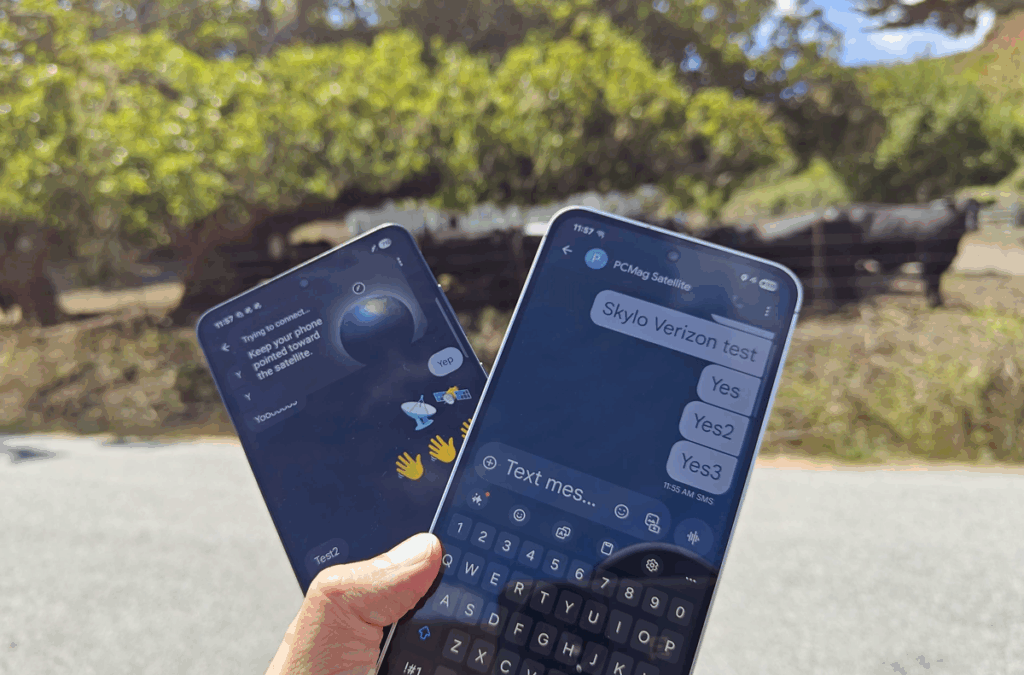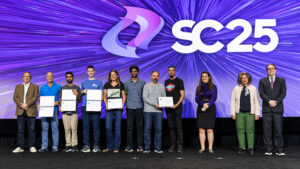
Apple and T-Mobile are not the only players bringing satellite connectivity to smartphones. Verizon has entered the fray through a partnership with satellite communications provider Skylo. But how does Verizon’s offering compare to the competition? Our tests, conducted in rural areas where cellular signals are scarce, reveal both the potential and the limitations of this burgeoning technology.
Verizon’s service, tested amidst farmland and livestock, offers Android users an alternative way to stay connected in dead zones. However, our findings also highlight the quirks of space-based communications and why T-Mobile’s “T-Satellite” service currently holds an advantage.
Understanding Skylo’s Approach
Skylo, based in Mountain View, California, differs from SpaceX in that it does not directly own any satellites. Instead, the company focuses on developing software to connect existing high-orbiting geostationary satellites from providers like Viasat, Echostar, and Canada’s Terrestar Solutions. This technology is compatible with some of the latest Android phone models and even smartwatches.
The service initially launched with emergency contact capabilities and expanded in March to allow Verizon subscribers to use the satellite network for SMS messaging. Like other satellite services, Skylo’s system activates only in cellular dead zones. Our testing began 45 miles south of San Francisco, where our Samsung Galaxy S25 Edge lost its Verizon connection, eventually displaying a satellite icon after a brief period of no signal.
“Make sure you’re outside with a clear view of the sky,” advised the Skylo system, prompting users to point their phones at a geostationary satellite.
Sending SMS messages through Skylo felt similar to Apple’s satellite messaging via Globalstar. While Verizon currently offers this service on select Android devices, the key selling point is that satellite messaging through Skylo is free for Verizon users.
Skylo vs. Cellular Starlink: A Comparative Analysis
While Skylo enables text and emoji transmission, it does not support RCS, which allows for high-quality media exchange. In contrast, T-Mobile’s T-Satellite, using SpaceX’s cellular Starlink system, supports Multimedia Messaging Service (MMS), allowing users to send pictures, audio, and video clips.
During our tests, the Samsung Galaxy S24 FE connected to Starlink’s low-earth orbiting satellites, enabling the sharing of photos and other media. T-Satellite is available to customers on rival carriers, including AT&T and Verizon, as a secondary eSIM, with a $10 monthly fee unless on T-Mobile’s premium plans.
Both satellite services can experience lag, with texts and MMS messages sometimes taking 20 seconds to several minutes to send. Video clips may require over 10 minutes.
Usability differences also emerged. Skylo and Apple’s services require manual activation and directional prompts, whereas T-Satellite connects automatically in dead zones, offering a more seamless experience.
Challenges and Future Prospects
Testing revealed occasional routing errors, with SMS messages sometimes arriving out of order or being lost. Skylo acknowledged potential delays when multiple messages are sent in rapid succession. Despite these challenges, Skylo remains free of charge, unlike T-Satellite, which incurs a fee for its more convenient service.
Skylo’s technology is evolving, with plans to support satellite voice calls and data services. T-Mobile also aims to enable satellite data for select mobile apps, enhancing usability in areas lacking cellular coverage.
“There have been hundreds of messages successfully sent through Skylo’s network to emergency responders connected via cellular service,” Skylo noted.
In conclusion, while T-Satellite currently offers a more robust and seamless experience, Skylo provides a valuable, cost-free alternative for Verizon users. As satellite technology continues to advance, both services are poised to offer even greater connectivity options in the future.






